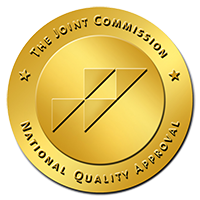Beginning July 15, many parents started receiving advance payments of the Federal Child Tax Credit. The IRS is paying half the total credit amount, $300 a month for each child under age 6 and $250 for each child age 6 to 17, on a monthly basis from now until the end of the year. The payments are being made on the 15th of each month, unless it falls on a weekend or holiday. They can claim the other half when they file their 2021 taxes next year.
Congress chose to have the child tax credit payments sent to families monthly as a way to help parents with their expenses, including housing, food, clothing, and school supplies. Parents of nearly 60 million children are receiving the monthly payments through direct deposit, paper checks or debit cards, according to the IRS. With this additional monthly income for families, more than four million children will be lifted out of poverty.
Families should be aware, however, that this means a smaller tax refund next spring. Many families count on receiving a refund of several thousand dollars so they can make a major purchase. Some have less withheld from their paychecks, hoping to have their refund as close as possible to zero, believing that overpaying means they are giving the government an interest-free loan. These people may end up owing money when they file their 2021 taxes.
Families who would rather take the entire credit in a lump sum next year can do so by opting out of monthly payments through an IRS portal. Go to www.irs.gov and search for child tax credit. So far, about 1 million households have opted out of the payments.
Families receive a federal income tax credit of up to $3,600 for each child under age 6 and $3,000 for each child age 6 to 17 for 2021. That's an increase from the 2020 child tax credit of $2,000 for each child up to age 17. Congress decided to divide this credit into twelve monthly amounts.
Low-income parents will receive more money through this child tax credit because the new law makes it fully refundable. It had been only partially refundable, up to the amount paid in taxes, leaving more than 26 million children unable to get the full credit because their families' incomes were too low, according to Treasury Department estimates. Higher income families may receive less than the full credit, down to $2,000 per child if the family’s income is over $400,000.
Parents who aren't citizens can receive the payments for their citizen children as long as they have individual taxpayer identification numbers and their children have Social Security numbers.
The other half of the Child Tax Credit (for the six months covering January through June) can be claimed when filing your 2021 income tax return.
The IRS is using the information shared on 2020 income tax returns, or the 2020 Economic Impact Payment information shared by people who do not earn enough to owe income tax, to make the direct deposits into bank accounts. Go to www.irs.gov and search for child tax credit if you need to change some information or if you are not receiving your payments.
The changes, both the increased amount and dividing it into monthly payments, currently apply to tax year 2021 only. Experts say the number of children who live in poverty in America will be reduced 40-45% by this program. Because of the impact these payments make for people who live in poverty, Congress may extend this program permanently.



